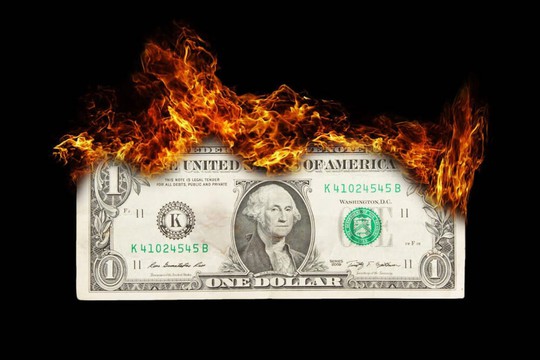The dollar's days as world's reserve currency are numbered.
Image: Screengrab
The US banking system is broken, stresses ‘The Asia Times’. That doesn’t portend more high-profile failures like Credit Suisse. The central banks will keep moribund institutions on life support.
But the era of dollar-based reserves and floating exchange rates that began on August 15, 1971, when the US severed the link between the dollar and gold, is coming to an end. The pain will be transferred from the banks to the real economy, which will starve for credit.
And the geopolitical consequences will be enormous. The seize-up of dollar credit will accelerate the shift to a multipolar reserve system, with advantage to China’s yuan as a competitor to the dollar.
Gold, the “barbarous relic” abhorred by John Maynard Keynes, will play a bigger role because the dollar banking system is dysfunctional, and no other currency — surely not the tightly-controlled yuan — can replace it. Now at an all-time record price of US$2,000 an ounce, gold is likely to rise further.
The greatest danger to dollar hegemony and the strategic power that it imparts to Washington is not China’s ambition to expand the international role of the yuan.
This crisis is utterly unlike 2008, when banks levered up trillions of dollars of dodgy assets based on “liar’s loans” to homeowners. Fifteen years ago, the credit quality of the banking system was rotten and leverage was out of control. Bank credit quality today is the best in a generation. The crisis stems from the now-impossible task of financing America’s ever-expanding foreign debt.
America’s chronic current account deficits of the past 30 years amount to an exchange of goods for paper: America buys more goods than it sells, and sells assets (stocks, bonds, real estate, and so on) to foreigners to make up the difference.
America now owes a net $18 trillion to foreigners, roughly equal to the cumulative sum of these deficits over 30 years. The trouble is that the foreigners who own US assets receive cash flows in dollars, but need to spend money in their own currencies.
Before 1971, when central banks maintained exchange rates at a fixed level and the United States covered its relatively small current account deficit by transferring gold to foreign central banks at a fixed price of $35 an ounce, none of this was necessary.
The end of the gold link to the dollar and the new regime of floating exchange rates allowed the United States to run massive current account deficits by selling its assets to the world.
In effect, the market worries that buying inflation protection from the US government is like passengers on the Titanic buying shipwreck insurance from the captain. The gold market is too big and diverse to manipulate.
The dollar reserve system will go out not with a bang, but a whimper. The central banks will step in to prevent any dramatic failures. But bank balance sheets will shrink, credit to the real economy will diminish and international lending in particular will evaporate.
Southeast Asia will rely more on its own currencies and the yuan. The dollar frog will boil by slow increments.
It’s fortuitous that Western sanctions on Russia during the past year prompted China, Russia, India and the Persian Gulf states to find alternative financing arrangements. These are not a monetary phenomenon, but an expensive, inefficient and cumbersome way to work around the US dollar banking system.
As dollar credit diminishes, though, these alternative arrangements will turn into permanent features of the monetary landscape, and other currencies will continue to gain ground against the dollar, concludes ‘The Asia Times’.
read more in our Telegram-channel https://t.me/The_International_Affairs

 10:05 29.03.2023 •
10:05 29.03.2023 •























